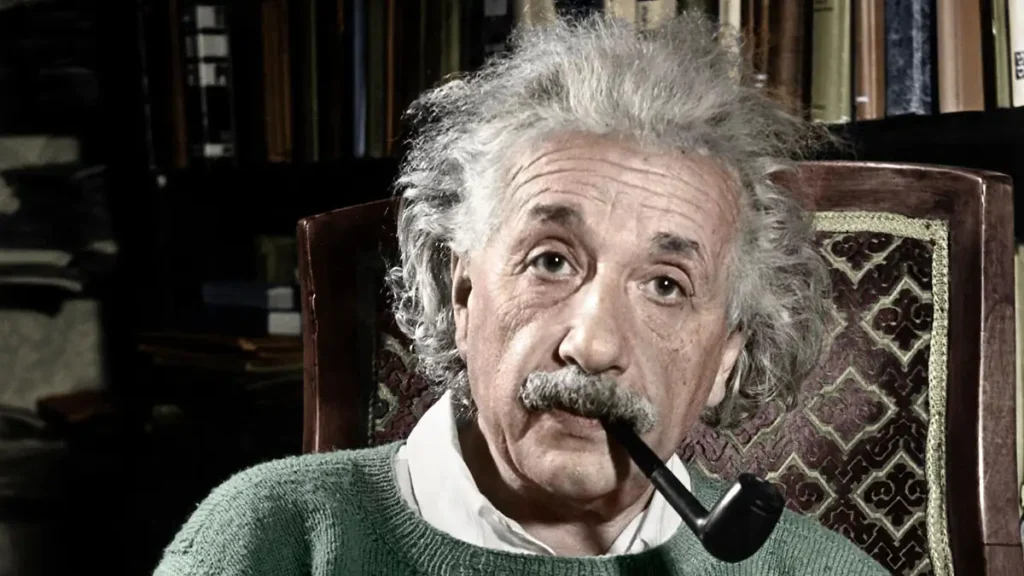Einstein’s Groundbreaking Theory
Albert Einstein’s Theory of Relativity stands as one of the most revolutionary breakthroughs in the field of physics, transforming our understanding of the universe. His ideas, particularly Special and General Relativity, reshaped how we view the fundamental forces governing space, time, and gravity. Before Einstein, these concepts were seen as rigid and unchanging. But his work revealed that space and time are interconnected, and gravity is not simply a force but the result of mass warping the fabric of space-time itself.
Einstein’s theories had profound implications, affecting everything from the behavior of light to the movement of planets. His work laid the foundation for much of modern physics, influencing fields as diverse as cosmology and quantum mechanics. In this article, we’ll break down the key concepts of Special and General Relativity to show how they changed the way we understand the universe and why they are still relevant today.
Special Relativity: The Basics of Space and Time
Special Relativity, introduced by Einstein in 1905, fundamentally changed the way we perceive space and time. The theory’s central idea is that the laws of physics are the same for all observers, regardless of their motion, and that the speed of light in a vacuum is constant for everyone, regardless of how fast they’re moving. This constancy of light speed led to two surprising consequences: time dilation and length contraction.
Time dilation occurs because as an object approaches the speed of light, time appears to slow down for that object relative to a stationary observer. For instance, in the famous twin paradox thought experiment, one twin travels through space at near-light speeds while the other stays on Earth. Upon returning, the traveling twin will have aged much less than the one who remained behind, due to time slowing down during the high-speed journey.
Length contraction refers to how objects appear to shorten in the direction of motion as they approach the speed of light. This means that, from the perspective of an outside observer, fast-moving objects seem smaller than they actually are. Special Relativity reshaped our concept of time and space, showing that they are not absolute but interconnected and flexible, depending on an object’s velocity.
General Relativity: Gravity as the Warping of Space-Time
While Special Relativity focused on objects moving at constant speeds, General Relativity, published in 1915, extended these ideas to include gravity and acceleration. Before Einstein, gravity was understood as a force pulling objects toward one another, as described by Newton. However, Einstein redefined gravity as the warping of space-time caused by mass.
In General Relativity, massive objects like stars and planets create curves or “dents” in the fabric of space-time, similar to how a heavy ball placed on a stretched rubber sheet bends the surface. Smaller objects, like planets, follow these curves, and what we perceive as gravity is simply the result of them moving along the curved space-time paths created by larger masses.
This concept of gravity as curved space-time explained many previously puzzling phenomena, such as the precise orbit of Mercury, which couldn’t be fully accounted for by Newtonian mechanics. General Relativity also led to predictions of black holes—regions where space-time is warped so intensely that not even light can escape. Einstein’s famous equation for General Relativity, E=mc², also linked mass and energy, showing they are interchangeable, which had profound implications for understanding the energy produced in stars and nuclear reactions.
General Relativity not only transformed our understanding of gravity but also provided a framework for studying the large-scale structure of the universe, from the orbits of planets to the expansion of the cosmos.
Time Dilation and the Nature of Time: How Relativity Affects Time
One of the most mind-bending aspects of Einstein’s theories is time dilation, which reveals that time is not constant or absolute, but can stretch or shrink depending on circumstances such as speed and gravity. In areas with strong gravitational fields, like near a black hole, time passes more slowly. This is called gravitational time dilation, and it occurs because gravity warps space-time, slowing the flow of time near massive objects.
We experience a less extreme version of this phenomenon on Earth. GPS satellites, which orbit the Earth at high speeds and far from its surface, experience time slightly differently from clocks on the ground. To ensure the accuracy of GPS, scientists have to adjust for this time dilation, proving that relativity impacts everyday technology.
Additionally, time dilation occurs at high speeds. For astronauts traveling near the speed of light, time would pass much slower compared to people on Earth. This idea, central to Special Relativity, challenges our traditional understanding of time as a fixed, universal measure. In reality, time is flexible and changes based on speed and gravity, showing how deeply relativity has altered our understanding of the universe.
The Curvature of Space-Time: Understanding Black Holes and Gravitational Waves
Einstein’s General Theory of Relativity revolutionized the way we think about gravity, not as a force, but as the curvature of space-time caused by mass. One of the most mind-blowing predictions of this theory is the existence of black holes—regions of space where gravity is so intense that not even light can escape. Black holes are formed when massive stars collapse under their own gravity, creating a singularity where space-time is infinitely curved. As matter and energy are sucked in, they cannot escape, effectively creating a “hole” in space-time.
In addition to predicting black holes, Einstein’s theory also forecasted gravitational waves, which were first detected in 2015, a century after his prediction. Gravitational waves are ripples in the fabric of space-time, caused by violent cosmic events such as the collision of black holes or neutron stars. These waves travel across the universe at the speed of light, stretching and compressing space-time as they pass through. The discovery of gravitational waves was a monumental achievement, as it provided direct evidence for one of General Relativity’s key predictions and opened up a new way of observing the universe.
Gravitational waves allow scientists to “hear” events that were previously undetectable, such as the merger of black holes. This discovery has not only confirmed Einstein’s theory but also deepened our understanding of the cosmos, proving that space-time is dynamic, flexible, and capable of responding to the most extreme events in the universe.
Everyday Impacts of Relativity: Why It Matters to Us
While Einstein’s Theory of Relativity may seem abstract, it has very real and practical applications in our daily lives. One of the most significant examples is GPS technology, which relies on time dilation corrections to provide accurate positioning. Satellites orbiting the Earth experience time differently due to their speed and altitude, and without adjustments based on Einstein’s equations, the GPS system would be inaccurate by several kilometers each day. Thanks to relativity, GPS can pinpoint your location within meters.
Relativity also shapes our understanding of the universe. For example, it explains the expansion of the cosmos and helps us understand the behavior of light around massive objects like stars and black holes. The bending of light, known as gravitational lensing, allows astronomers to observe distant galaxies otherwise obscured by other celestial bodies.
On a philosophical level, Einstein’s work challenges our intuitive understanding of space and time, revealing that they are not absolute but interconnected and fluid. Relativity forces us to rethink the nature of reality itself, showing that time can stretch and space can bend, depending on gravity and motion.
Einstein’s Legacy in Modern Science
Albert Einstein’s Theory of Relativity forever transformed the field of physics, offering a new way to understand space, time, and gravity. His groundbreaking ideas continue to shape modern science, influencing everything from GPS technology to our understanding of the cosmos. Relativity remains a cornerstone of astrophysics and cosmology, as scientists study black holes, gravitational waves, and the expanding universe.
Einstein’s work didn’t just change science—it challenged how we perceive reality itself, showing that time and space are flexible and dependent on one another. As we continue to explore the universe, Einstein’s legacy lives on, guiding us in our quest to understand the deepest mysteries of existence.



